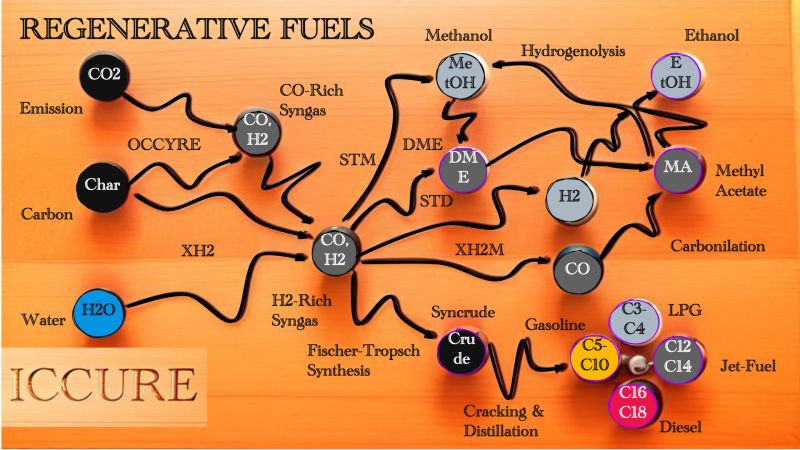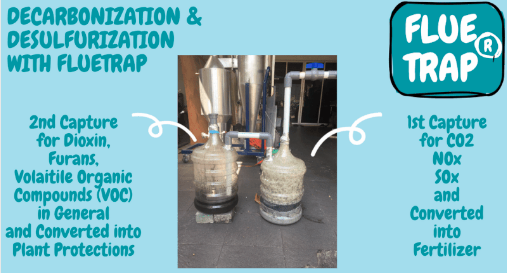Regenerative Fuels Family
Advanced Renewable
Tue , 12 Mar 2024 17:18 WIB

SDG number 7, Affordable Clean Energy, which the world agreed to achieve by SDGs year 2030, should be very likely to be achieved, if all possible pathways for this are actually implemented. Among these pathways, we from the Advanced Renewable Organization (ARO) are promoting Regenerative Energy (RE) pathways.
Regenerative Fuels (RFs) particularly, which are part of RE, all types of fuel that we need today can be produced through this RE route. The three main raw materials for this which are definitely available throughout the world - so that SDGs number 7 is also evenly distributed throughout the world, are CO2 emissions, carbon from biomass and water. The diagram below is the path for each of the fuels we need, if produced from these three raw materials.
CO2 emissions can be reacted directly with charcoal in the OCCYRE reactor, the result is syngas which is rich in CO, if there is a little H2 in this first syngas content - this comes from the H2 contained in the charcoal - which on average charcoal still contains H2. Syngas which is rich in CO can be upgraded to be rich in H2 using the XH2 reactor.
The XH2 reactor can also be given input in the form of charcoal or biomass with water, the result is straight H2-Rich Syngas. This H2-Rich syngas can be adjusted to the H2/CO ratio and can even be separated between H2 and CO with a Membrane or XH2M reactor. On average, an H2/CO ratio of >2 in molecule units is needed to be processed into the next fuel effectively.
In the oxygenates fuel group, DME (Dimethyl Ether) and methanol can be produced directly from syngas whose H2 content has been upgraded. DME can also be produced from dehydrated methanol. Meanwhile, ethanol can be produced through two DME processes, namely through carbonylation to convert DME into Methyl Acetate (MA), and then hydrogenolysis to convert MA into ethanol with the by-product methanol.
Other fuels from the hydrocarbon group, such as gasoline, diesel, jet-fuel and LPG, can also be produced from H2-Rich syngas. The main process is Fischer-Tropsch Synthesis, and the result is synthetic crude or syncrude. Syncrude is very similar to crude oil from petroleum - only the origin is different.
Syncrude, through the cracking and distillation process, will be able to produce all types of hydrocarbon fuel that we need as mentioned above. All the processes in the diagram below, separately, part by part - have been proven because they have been carried out in industry for the last three centuries.
What we need now is to use all these mature technologies to solve current problems, namely carbon emissions in particular and the affordability of clean energy for the entire population of this planet earth, or SDGs number 7 which I mentioned at the beginning of this article above.
Pos Lainnya
Tiga Garis Depan Peradaban Berkelanjutan
Mar 12, 2024
Decarbonization Talk With Jakarta Governor Candidate
Mar 12, 2024
Kategori
Renewable Energy






Silakan mendaftar terlebih dahulu!
Untuk memposting komentar baru. Anda harus login terlebih dahulu. Masuk
Komentar
Tidak ada komentar